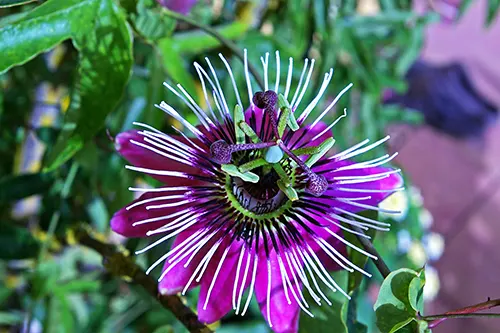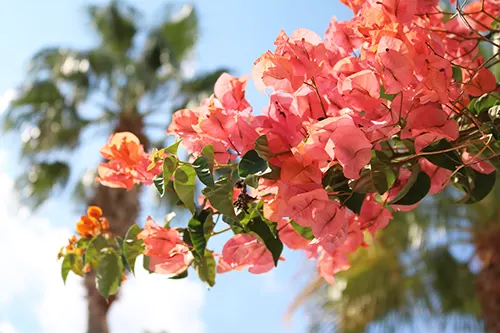Climbing vines for your garden trellis, arbor or pergola
Climbing vines are the ideal plant for creating height interest in a garden or on a deck or patio. They have different means of attaching to supports as they grow—some cling or attach, some curl and some wrap . Be sure to match the style of your garden trellis or arbor to the appropriate type of climbing vine. Sometimes adding netting or wire can be used on a trellis to accommodate more types of climbing vines.
Be creative and combine two or three flowering climbing vines with complementary colors on a large garden trellis or arbor for a wonderful display throughout the growing season. Many climbing plants can be grown successfully in large garden planters, just be sure to provide excellent drainage and protection in cold winters.

Stem Tendrils
– climbing vines that have tendrils need horizontal supports (less than 1″ diameter) that their thin, wiry growths can grab.
- Passionflower (Passiflora)
- Grape (Vitis)
- Ampelopsis glandulosa
Leaf Tendrils
- Sweet peas (Lathyrus)
- Cobaea scandens
- Chilean glory flower

Twining Leaves
– young leaves of these climbing vines twist around slender wires, string, twigs or other leaves. They need a thin enough support for the leaf stem to curl around.
- Clematis
- Climbing nasturtium
- Rhodochriton (Purple Bell Vine)

Twining Stems
– twining stems twist around whatever they touch. Some climbing vines twin loosely and some twine more strongly. Climbers, such as wisteria and honeysuckle, that can grow quite large and become heavy so they must have good strong support such as a garden trellis secured to a stable wall.
- Morning glory, Moonflower (Ipomoea)
- Jasmine (Jasminum)
- Honeysuckle (Lonicera)
- Black-eyed Susan vine (Thunbergia)
- Wisteria
- Pole Beans
- Bittersweet (Celastrus)

Scramblers
– scramblers are unable to climb on their own so you will need to tack or tie them with wire or gardening string. Scramblers sometimes have thorns that help them grip neighboring stems.
- Bougainvillea
- Cape leadwort (Plumbago)
- Climbing rose (Rosa)
Adhesive Pads
– some climbing vines have stem tendrils with touch-sensitive adhesive pads that allow them to stick to almost any surface.
- Cissus
- Boston ivy (Parthenocissus)
Clinging Stem Roots
– these climbing vines use clinging stem roots to attach themselves to surfaces of almost any kind.
- Euonymus
- English ivy (Hedera) : be careful where you plant English ivy, it is a vigorous plant
- Climbing hydrangea (Hydrangea petiolaris)